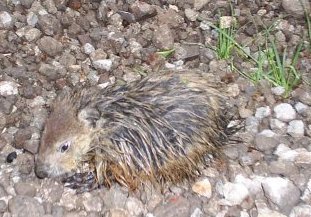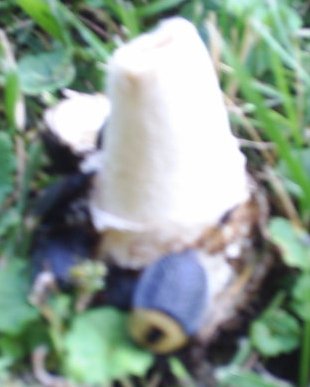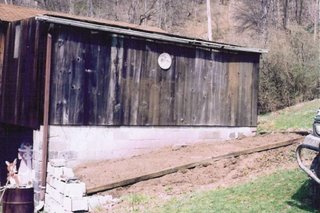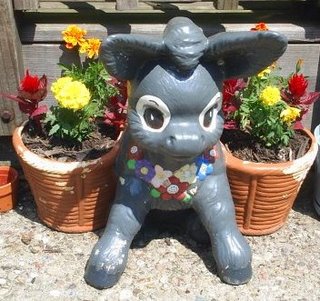
An Inverted Sort of Prayer
By Chris F Needham
Now or Never Publishing
May 2006
360 pp.
Fiction
Price: $21.95 trade paperback
ISBN 0-9739558-0-5
An Inverted Sort of Prayer is narrated by main character, Billy Purdy, an Indian and ex-professional Canadian team hockey player, whose stardom sends him on an abusive rocky road of steroids, drugs, alcohol, sex, and sordid rendezvous’ to find himself.
Purdy is just as dangerous off the ice as he was on, as an enforcer.
So there you had it: a good in the room kind of guy with traces of blood in his urine splitting time between the press box and the penalty box. Sometimes I think my entire life has been spent in some box. (pg.14)
Purdy strives to be unnoticed, yet thrives to be recognized for his stardom—and you can’t have it both ways. This leads to him spending as much time boxing himself in, in life’s situations, as he’d spent in the penalty box during games.
He’s constantly trying to find himself once his career has ended, only to have his “friends” lead him further into abusing drugs and alcohol. He’s as much a star and failure in the local bars, as he was on the ice—placing himself within a cocoon or box to keep from getting close to others.
Even realizing what steroid, alcohol, and drug abuse had done to him, he didn’t stop.
. . . booze is very different than juice. Juice takes discipline, while booze is the escape from any discipline and, in the short term anyway, manifests itself almost exclusively in the spirit—thus that particular nickname, I take it. Juice, on the other hand, proceeds as a muscular dialogue, teaching the user facts of general validity, and the abuser the facts of life. I have learned nothing from the use of alcohol. But I have learned a great deal from the abuse of steroids. I have seen strength and power doled out in weekly syringes and monthly cycles. And I have experienced the shrinking of the body and the agonizing self-loathing of withdrawal—followed by the growth and associated pleasure when juice-thirsty muscles drink from the vial. The continued use of steroids, the discipline and the addiction to that discipline, exists as a self-stoking fire, a nuclear reaction at the muscular level contained only by the user’s reluctance to strap yet more horsepower onto an already overburdened chassis. For the juicer, when he stops growing he starts to die. (pg.39>
For Billy Purdy there was no stopping. It was difficult for him to accept that he was no longer the enforcer of his trade and more difficult to accept that even out of the box and off the ice, he was a heavyweight and his own worst enemy.
Mine was a dying trade. The heavyweight, it seemed, an endangered species. Gone were the glory days of the gallant enforcer. Gone were the days of respect and pride upon the blades. These days it was all corporate boxes, television revenues, bottom lines, and faggot hockey. These days anyone could play the heavy and make it pay in spades. (pg.77)
It was after he’d been suspended indefinitely that he realized his life was a shambles and his friends weren’t really his friends.
His bartender friend, Chris DeBoer, youngest offspring of the late prime minister, announced that he had written a book.
“So what made you decide to write a novel?” I asked in a spirit of eager curiosity and chatty candour, at which point Chris took a deep breath and answered:
“Same reason anyone writes a novel. Prestige.” (pg.78)
“So you, what, wrote some sort of nasty novel about women, is that it? Well no wonder no one wanted to publish it. Plenty of books never get published. The vast majority of books never get published.” (pg.86)
But DeBoer’s friend, Melanie, told Purdy it was going to be published.
”But not by a Canadian publisher,” she intoned, as though I was an infant or an idiot or perhaps, I held out hope, an idiot savant of some sort.
“No offence, Chris, but six weeks isn’t really a great deal of time to output a finished manuscript, former prime minister’s son or not.”
“Look,” I said, shuffling forward in my chair,” “everything else aside, have you ever considered the fact that a book written by a bartender tends to beget its failure to be published? Has it ever occurred to you that perhaps those concepts are not entirely mutually exclusive?”
“Look, the publishers up here rejected it for all the wrong reasons, just as you knew they would.”
“What, and the Americans accepted it for all the right reason?”
”Actually no, they accepted it for all the wrong ones,” Chris said.(pg. 81)
I must admit I was altogether thrown by that. And in truth it suddenly occurred to me that I was asking all these questions under the mistaken notion that these people had something to gain from their contribution.
”I must be missing something here,” I said, “because this really makes no sense whatsoever.”
”Well there’s something else you should probably know, Billy. Something the others—don’t.”
“Good Christ, there must be.”
“I took it word for word from your father’s book.”
”Lovestiff Annie? Are you serious?”
”Yup.”
He looked at me a long time. He was waiting for me to say no, I suppose.(pg.82)
From this point, Needham has Purdy perusing nearly every bar in Canada along with his so-called friend DeBoer and a number of other shady characters who help contribute to Purdy’s abuse.
Needham’s characters and description are so real; the readers will find themselves sitting on bar stools, sniffing the stagnant smoke-filled, booze-infiltrated air.
As mentioned, Mitch was overweight, not so overweight as to mention it twice perhaps, but in my mind still overweight, with small, soft, almost feminine hands forever fluttering up around his chubby face, receding jaw and cauliflowered ears, one hand telling the story, the other hand underlining all the important words. Penance, no doubt, for the sin of being a pimp, Mitch always seemed to be sporting some rather large oval sweat stains under the arms of his dress shirts, and his soft feminine hands (devoid, like the rest of him, of any and all suspicion of bone), when not fluttering up around his ears, were either aggressively engaged with his chubby, sweating glasses of overproof run and Coke or else squeezing the last vestiges of life from a perpetually dying smoke. (pg. 92)
Needham has Purdy gallivanting with DeBoer; following him, keeping an eye on him, and discussing the book. He takes the reader on a tour—from one Canadian bar to another, and when he and his friends run out of bars in Canada, they leave on journeys to peruse other watering holes. They skipped from bars in New York, San Jose, Vancouver, Prague, a stopover in Amsterdam, a “milk-run” from Los Angeles to Mexico City to Guatemala City, Costa Rica and ending in Puerto Limon for the Columbus Day festival.
Purdy loses DeBoer during one trip and catches up with him at the festival and spends a few days with him before he gets ready to leave for home to handle the release of his book. I’ll leave it to the reader to read what happens there.
In his debut novel, Needham does a bang up job bringing his characters to life. The dialogue flows so naturally, it makes you feel part of the conversation.
The long paragraphs of description, which led from one page to the next, along with the need to know why Purdy would let DeBoer get away with plagiarizing his father’s book, kept me reading to the end.
An Inverted Sort of Prayer, takes you on a tour of civilized and uncivilized behavior, and Needham’s writing will have you feeling the frustration and failures of his characters. It’s worth reading to the twisted end, even if you’re not a fan of hockey, alcohol, drugs and sex.
CLICK
HERE to purchase
An Inverted Sort of PrayerNeedham has written six novels, of which
An Inverted Sort of Prayer is number four, but actually his first published novel. Needham says, “the first three are very, very bad and, if we’re at all lucky, shall never see the light of day.”
Chris Needham is working on book number seven, under the working title “Fonduing with the Feldmans.” The final draft of Needham’s second published novel,”Falling from Heights,” is due out in Spring 2007.
fiction,
Chris F. Needham,
book review,
An Inverted Sort of Prayer,
jdkiggins







 Order your copy
Order your copy 
















